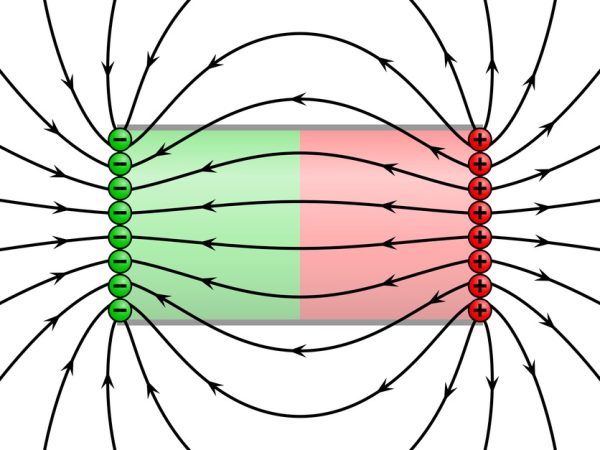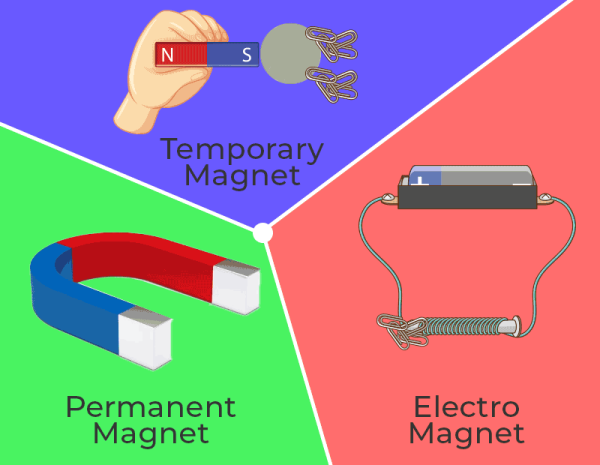
What is Magnetism?
Magnetism is the force of attraction or repulsion between magnets, the ability of electric charge to move is the creator of magnetism. Atoms are the small units of anything that exists around us. Each atom contains some charged particles known as electrons. Because of their motion, each electron behaves like a small magnet and generates an electric current too.
In most materials, equal numbers of electrons spin in opposite directions, so their magnetism cancels out. That is why fabric and paper are said to be weakly magnetic. But in iron, cobalt, and nickel, most of the electrons spin in the same direction. This makes the atoms in these materials strongly magnetic—but they are not yet magnets. But for magnetizing, another strongly magnetic substance has to come into the magnetic field of an already existing magnet. Magnetic field- It is the surrounding area of a magnet within which the magnetic force is distributed.

Types of magnetism
- Permanent Magnets– Magnets that can maintain their magnetism for a long time are called permanent magnets, such as natural magnets (magnetite) and artificial magnets, etc. Permanent magnets are not easily demagnetized or magnetized and the polarity of them will not change. However, if the permanent magnet is heated above the Curie temperature or in an environment with high reverse magnetic field strength, its magnetism will also decrease or disappear.

- Temporary Magnets-Temporary Magnets act like magnets only when they are within a strong magnetic field. They lose their magnetism when the external field is removed. Temporary magnets are made from soft metals that are easy to magnetize but their magnetic properties are fleeting. Common uses of temporary magnets include electric bells and relays where magnets are only required to function when electric current is present.
- Electro Magnets- Electromagnetism is a branch of physics that is involved in the actions of electromagnetic forces between electrically charged particles. Moreover, the electromagnetic force is one of four basic forces. It displays electromagnetic fields similar to magnetic, electrical, and light. Furthermore, it is the basic reason electrons are attached to the nucleus and responsible for completing the structure of the nucleus. The electromagnetic force is the kind of physical interaction that takes place between charged particles. It acts between charged particles and is the sum of all magnetic and electrical forces. Besides, electromagnetic forces can be either attractive or repulsive.
How Do We Benefit from Magnetism?
Magnetism bears relevance to many aspects of life in today’s society. Electronics use it for the functioning of appliances such as speakers, hard drives, and others. Medicine uses MRI machines to get clear images of parts of the human body to help doctors diagnose the problem and prescribe the appropriate medication. Transportation makes use of magnetic levitation trains to travel fast due to the minimization of friction. Besides, magnets play a great role in data storage, in the sphere of payment systems, and household appliances, which justifies their huge application in technology and everyday activities.
Related Stories:
https://education.nationalgeographic.org/resource/magnetism/
https://science.howstuffworks.com/magnet.htm
https://ece.northeastern.edu/fac-ece/nian/mom/work.html
https://www.magnet4sale.com/how-magnets-work-the-science-behind-one-of-natures-fundamental-forces/
https://www.livescience.com/38059-magnetism.html
Take Action:
https://education.nationalgeographic.org/resource/magnetism/
https://www.amazon.com/Exploring-Magnetism-Action-Science-Ardley/dp/0531046176




